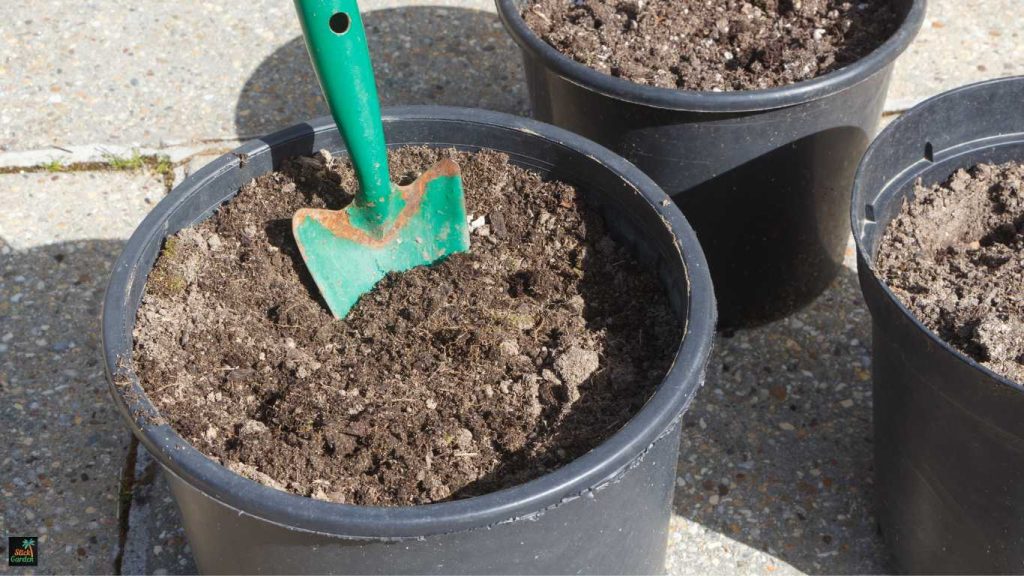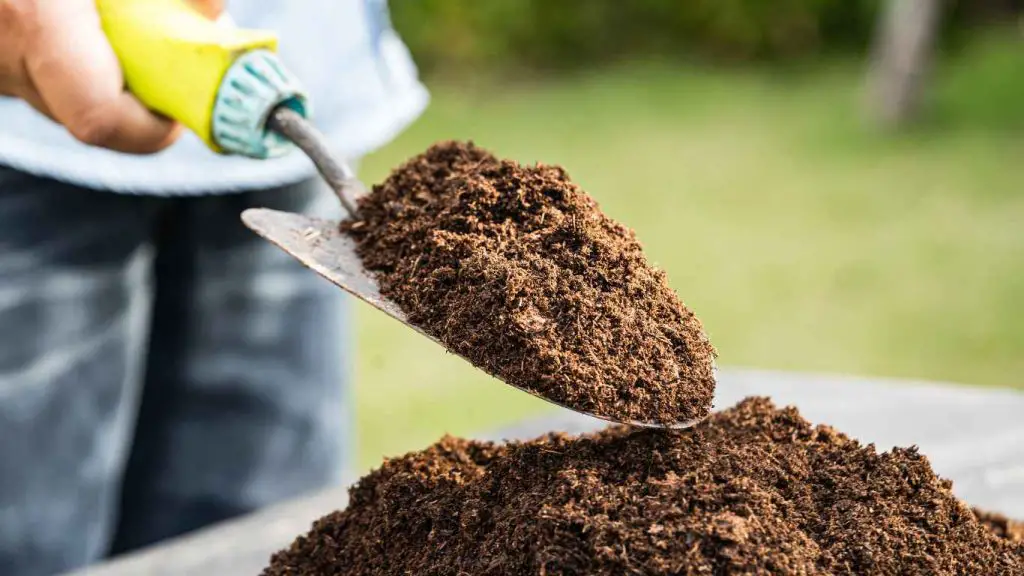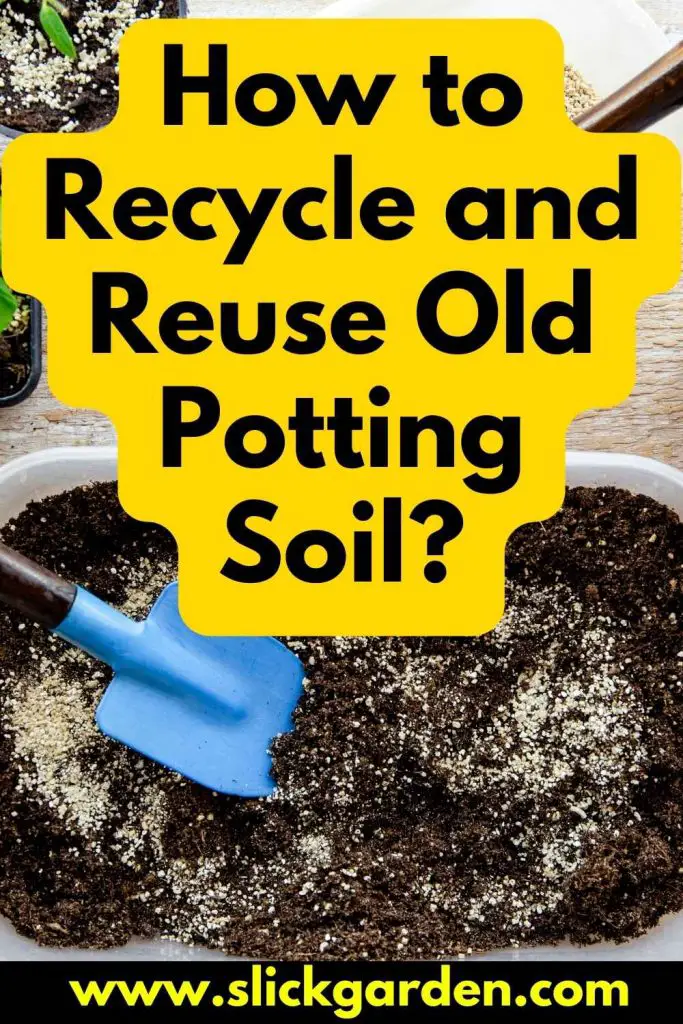Reusing potting soil is an economical, waste-reduction strategy that supports sustainable gardening methods. Reusing soil contributes to the preservation of a healthy environment as gardening and indoor plant cultivation gain popularity.

Importance of Reusing Potting Soil
Potting soil reuse lessens its environmental impact by lowering the need for peat and landfill garbage. It encourages a circular approach to gardening, which is consistent with sustainability principles. This method lowers the carbon footprint and conserves resources in the production of new soil and the transportation of heavy materials. It also lessens waste and aids in the preservation of natural habitats.
Benefits for the Environment and Cost Savings
Reusing potting soil preserves peatlands for biodiversity and carbon sequestration by reducing the amount of peat consumed. Additionally, it lessens waste generation, which keeps ecosystems healthier, and less waste ends up in landfills.
Reusing potting soil also encourages resource conservation, which makes it possible to use natural resources effectively and create a gardening culture that is more sustainable.
Because less new soil is needed for each planting cycle, reusing potting soil can drastically lower gardening costs. Enhancing soil fertility through proper reconditioning can lessen the need for extra fertilizers and amendments.
To improve the qualities of recycled soil and produce healthier plants and better gardening results, gardeners can also spend money on premium soil amendments.
Reusing potting soil helps gardeners save a lot of money while also conserving resources and minimizing waste, making gardening a more economical and sustainable activity.
Check The Condition of the Soil Before Using
Check for Pests and Diseases: Examine the soil for visible pests, mold, or fungal growth to identify diseases and pests. Because healthy roots are firm and white, check them for rot or other diseases. A rotten smell denotes anaerobic conditions or pathogens, whereas an earthy smell indicates healthy soil. Should a disease be suspected, cultivate a test plant and isolate a small batch of soil to track its effects. As an alternative, you can identify particular pathogens with a soil test kit.
Evaluate Soil Texture and Structure: A high organic matter content, a crumbly, light texture, consistent drainage, a compacted texture, and a balanced particle size distribution are all characteristics of good potting soil. It should have a mixture of clay, silt, and sand and feel light and crumbly. High organic content is indicated by a rich, dark color, which is good for plant growth. Retaining nutrients and facilitating drainage require a well-balanced mixture of fine and larger particles.
Sterilize the Soil
It is essential to sterilize old potting soil in order to get rid of pests, dangerous pathogens, and weed seeds. There are three efficient ways to sterilize soil:
To improve sterilization, preheat your oven to 180–200°F (82–93°C). Lightly moisten the soil. Line a baking sheet or pan with a thin layer of soil and cover with aluminum foil.
Bake until the soil reaches an internal temperature of 180°F (82°C), which should take 30 to 1 hour. Remove the soil and cover it once it has cooled to avoid contamination.
Microwave Sterilization
Add a tiny bit of moisture to the soil and transfer it into a plastic bag or container that is safe to use in the microwave. Set the microwave to high and cook the soil for 90 seconds per pound of soil, or 180–200°F (82–93°C) on the inside. Before using the soil, let it cool completely.
Solarization
Select a sunny location that receives direct sunlight to sterilize the soil for plants. Apply a thin layer of soil to a level surface and mist it lightly to produce a humid atmosphere.
Make sure the edges of the clear plastic tarp are buried or weighted down before covering the soil. During the warmest part of the year, cover the soil with a tarp for four to six weeks, allowing the sun’s heat to destroy the majority of pathogens, pests, and weed seeds. Before using the soil, take off the tarp after the allotted time and let it cool.
Amend and Revitalize the Soil
Fertile potting soil must be regularly amended and revitalized by adding organic matter and incorporating essential nutrients, according to prescribed procedures, in order to support healthy plant growth.
Adding Organic Matter
Compost enhances soil structure, water retention, and aeration by adding microorganisms and nutrients. Restock depleted organic matter in old potting soil by mixing well-decomposed compost into it.
Older manure enhances soil texture and water-holding ability while supplying vital nutrients for plant growth, such as potassium, phosphate, and nitrogen.
To improve the soil’s organic content and nutrient profile, add well-aged manure to it in a ratio of one part to three.
Incorporating Nutrients
In order to maintain constant nutrient levels for plant health and minimize the need for frequent fertilization, slow-release fertilizers deliver a steady supply of nutrients over an extended period of time. Equal amounts of potassium, phosphorus, and nitrogen should be added to them.
Organic fertilizers, such as fish emulsion, bone meal, and blood meal, provide natural sources of important nutrients and encourage microbial activity, which enhances soil health.
When organic fertilizers are mixed in accordance with the directions on the package, nutrients are distributed evenly, promoting the growth of roots and foliage.
For optimal drainage, aeration, and root health, it is imperative to improve the structure of aged potting soil, which can be accomplished in a number of ways.
Adding Perlite or Vermiculite
Because it expands when heated, perlite, a lightweight volcanic rock, enhances drainage, and aeration, and prevents soil compaction. It also aids in keeping moisture in without getting soggy.
Use one part perlite to three parts soil when adding perlite to potting soil, adjusting the amount according to the needs of the plants.
Vermiculite is a heated mineral that enhances soil structure maintenance, aeration, and moisture retention. Adjust the mixture according to the needs of the plants, using a ratio of one part vermiculite to three parts soil.
Known by several names, including horticultural sand and builder’s sand, coarse sand promotes aeration, drainage, and inhibits soil compaction.
For plants that require superior drainage, increase the amount when mixing it with 1 part sand to 4 parts soil. Mix perlite or vermiculite with coarse sand to create a well-balanced potting mix that provides excellent drainage, aeration, and moisture retention.
Steps to Improve Soil Structure

Break up old potting soil into loose clumps and gradually mix in amendments such as coarse sand, perlite, or vermiculite to improve the structure of the soil.
Check for looseness and crumbliness in the texture of the soil, make any necessary ratio adjustments, and make sure the amendments are dispersed equally throughout the soil to prevent poorly structured pockets.
Test Soil pH and Adjust if Necessary
In order to provide your plants with the best possible growing environment, the pH of your recycled potting soil is essential.
To measure the pH of soil, collect distilled water, clean containers, and a pH test kit or meter. Samples of soil should be mixed and put in a clean container. Use the test strip or solution to test the soil after mixing the mixture and allowing it to settle.
Adjust the pH meter and put the probe in if you’re using one. Compare the pH measurement to the range that plants should have.
Add organic matter such as pine needles or oak leaves, elemental sulfur or aluminum sulfate, agricultural lime (calcium carbonate), or dolomitic lime (calcium and magnesium ions) to lower the pH of the soil.
Use with caution, as wood ash can quickly increase ph. Compost, agricultural lime, and organic matter can all support the maintenance of the acidity and alkalinity of soil.
Mix with Fresh Potting Soil
Reusing potting soil can be combined with new soil to rejuvenate the soil and encourage ideal plant growth. The right ratios and benefits should be understood to get the best results.
Reviving old soil while preserving nutrient supply and structure can be accomplished by mixing 50% old potting soil and 50% new potting soil.
For best plant health, use a 40% old soil to 60% fresh soil mix in severely depleted soil, and a higher percentage of fresh soil in moderately depleted soil.
Because it offers a balanced supply of vital nutrients, fresh potting soil improves soil fertility, structure, and cost-effectiveness. It enhances aeration and water retention by improving the texture and structure of old soil.
This technique reduces its negative effects on the environment, conserves resources, and promotes sustainable gardening.
Additionally, it adds advantageous microorganisms that improve nutrient cycling and soil health. Fresh potting soil also keeps the pH level in check, which is beneficial for plant health and nutrient uptake.
Store Recycled Soil Properly
Storing recycled potting soil correctly is essential to maintain its quality and prevent contamination. In order to store recycled soil, make sure the containers are clean, moisture-proof, and not overfilled.
To prevent mold, mildew, or bacterial growth, make sure the containers are dry and clean. Label the containers with the contents and the date of storage to keep track of the types and ages of soil.
Store in a cool, dry place between 50°F and 70°F, avoiding extreme heat or cold. Keep the containers tightly sealed to prevent pests and contaminants.
Elevate the containers to prevent contamination. Rotate stock using First In, First Out (FIFO) and periodically check them for pests, mold, or other problems. Rejuvenate the soil before using it by moistening and fluffing it to improve aeration and rehydrate dry components.

Creative Uses for Excess Soil
The article offers inventive uses for extra soil leftover from gardening endeavors.
Gardeners can use extra soil for a variety of tasks, such as topdressing lawns, constructing raised beds, filling planters and containers, erecting retaining walls, amending garden beds, backfilling plantings, laying pathways, and doing landscaping work.
You can use excess soil to strengthen the structure of the soil, increase organic matter, improve drainage, and improve soil quality.
In landscaping projects, it can also be utilized to create ornamental features and useful pathways. In general, utilizing extra soil can improve the landscape as a whole.
By adding organic matter, necessary nutrients, and a combination of fresh and old soil, reusing potting soil has positive effects on the environment and the economy. This method encourages sustainable gardening techniques, lowers waste, and conserves resources. It keeps the soil in good condition and promotes strong, healthy plants while saving money.
